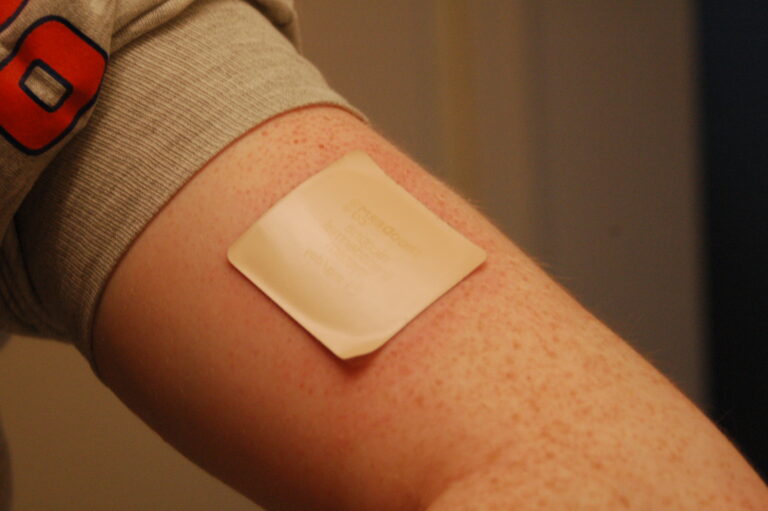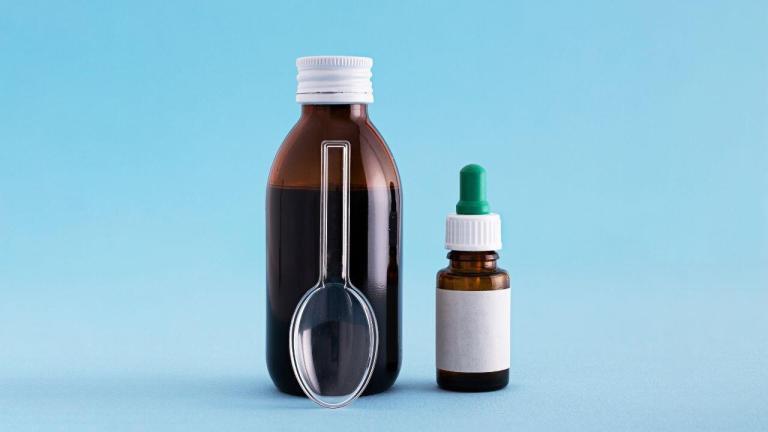
Oral Solid Dosage includes a range of pharmaceutical formulations designed for ingestion, where the medication is delivered in a solid form. This broad category includes tablets, capsules, powders, and granules, among others, aimed at providing an effective means to administer active pharmaceutical ingredients (APIs) to patients.
OSD forms are manufactured through various processes that compact the ingredients into a solid mass, which can be precisely dosed and conveniently consumed. They are a fundamental part of oral medication therapies, offering a straightforward route for drug delivery.
As a primary mode of pharmaceutical administration, OSDs play an important role in healthcare, catering to a wide array of medical conditions and patient populations.
Definition of Oral Solid Dosage
Oral Solid Dosage refers to medications prepared in a solid form for oral administration. This category encompasses a variety of formats including tablets, capsules, powders, granules, and more, designed to deliver active pharmaceutical ingredients (APIs) to the body through ingestion. OSDs are distinguished by their stability, ease of dosage precision, and convenience in handling and storage compared to liquid or injectable forms.
They are engineered to meet diverse therapeutic needs, offering different release mechanisms such as immediate, modified, or controlled release to ensure effective treatment outcomes. OSDs are widely utilized in healthcare for their patient-friendly administration, making them a staple in both acute and chronic disease management.
Types of Oral Solid Dosages
Oral Solid Dosages represent a broad category of pharmaceutical formulations designed for oral intake, offering a diverse range of types to cater to various therapeutic requirements, patient preferences, and compliance needs. Each type of OSD brings unique benefits and applications within the pharmaceutical industry.
- Tablets (Mono and Bi-layer): Tablets are the most common form of OSD, available in mono-layer for straightforward, single-phase drug release, and bi-layer for dual-phase release, allowing for immediate and modified drug release systems. This versatility supports complex dosing regimens within a single tablet, improving patient compliance.
- Fixed-Dose Combinations (FDCs): FDCs incorporate multiple active ingredients into a single dosage form, simplifying treatment regimens for patients with co-morbid conditions or requiring combination therapy. This can enhance adherence and reduce the likelihood of medication errors.
- Micro and Mini Tablets: These smaller tablets are designed for populations with swallowing difficulties, such as pediatric and geriatric patients. Their reduced size facilitates easier administration and more precise dosing.
- Aqueous Film Coated Tablets: This type involves tablets coated with a water-based solution to improve swallowability, mask unpleasant tastes, and sometimes control drug release rates.
- Capsules: Capsules are gelatin or vegetable-based shells filled with medication in powder or granule form. They can be tailored for immediate or delayed release and are often preferred for their ease of swallowing.
- Beads, Including Multi-Particulate Fluid Bead Coating: Beads offer a multi-particulate drug delivery system, providing uniform drug distribution and consistent release profiles, essential for controlled dosing.
- Granules for Reconstitution: These are designed to be reconstituted into a liquid form before administration, offering flexibility for patients who have difficulty with solid forms.
- Powders Including Powder-in-Bottle (PiB) Dosage Forms: PiB allows for the medication to be stored as a powder and reconstituted into a liquid at the time of administration, ensuring stability and ease of use.
- Stick Packs: Stick packs are single-dose packets of powder medications, offering convenience, portability, and ease of use for on-the-go patients.
Advantages of Oral Solid Dosages
Oral Solid Dosages are a cornerstone in pharmaceutical formulations, offering a myriad of advantages over other dosage forms that underscore their prevalence in drug delivery. The benefits of OSDs span from manufacturing efficiencies to patient-centric considerations, making them a preferred choice for a wide range of therapeutic applications.
- Stability and Long Shelf Life: OSDs, such as tablets and capsules, are inherently stable, offering a longer shelf life compared to liquid formulations. This stability reduces the need for refrigeration and makes them ideal for distribution and storage in varied climate conditions, ensuring the integrity of the medication over time.
- Convenience and Compliance: The solid form of these medications facilitates ease of handling, storage, and transportation. They are discrete, do not require measurement for dosing like liquids, and are often designed for easy ingestion, all of which contribute to higher patient compliance. The availability of various OSD forms, including chewables, effervescents, and mini-tablets, further caters to diverse patient needs and preferences, enhancing adherence to treatment regimens.
- Precision Dosing: OSDs allow for precise control over drug dosage, an essential factor in therapeutic effectiveness. The manufacturing process of OSDs ensures uniformity and consistency in drug content, providing patients with accurate dosing and minimizing the risk of overdose or underdose.
- Cost-Effectiveness: The production and packaging of OSDs are generally more cost-effective compared to other formulations like injectables or liquids. Their stability and longer shelf life also contribute to reduced wastage, making them economically advantageous for both manufacturers and consumers.
- Versatility in Drug Release Profiles: OSDs can be engineered to modify the drug release rate, including immediate, delayed, or extended-release profiles. This flexibility allows for the customization of drug delivery to meet specific therapeutic goals, improving patient outcomes by maintaining optimal drug levels in the body over time.
Use Cases of Oral Solid Dosages
Oral solid dosages are a fundamental pillar in the pharmaceutical landscape, serving a broad spectrum of therapeutic needs with unparalleled versatility. These formulations include tablets, capsules, powders, and more, and provide tailored solutions for a variety of medical conditions, patient preferences, and compliance requirements.
Chronic Disease Management
One of the most significant contributions of OSDs is in the management of chronic diseases. Conditions such as diabetes, hypertension, heart disease, and mental health disorders benefit immensely from the consistent and controlled drug release offered by OSDs.
Their stability ensures long-term efficacy, while the convenience of oral administration supports daily adherence, a cornerstone in chronic disease management. For example, extended-release tablets allow for once-daily dosing, simplifying regimens and improving patient outcomes.
Pediatric and Geriatric Medications
Addressing the unique needs of pediatric and geriatric populations is a challenge that OSDs navigate with finesse. Children and elderly patients often struggle with swallowing difficulties, necessitating the development of mini-tablets and chewable forms that are both effective and palatable.
These adaptations ensure that vulnerable populations receive the medication they need in a form that is easy to ingest, reducing the stress and discomfort associated with medication intake.
Combination Therapies
The advent of fixed-dose combinations (FDCs) in OSD form has revolutionized treatment regimens across multiple therapeutic areas. By combining two or more active pharmaceutical ingredients (APIs) in a single tablet or capsule, FDCs streamline therapy, reduce pill burden, and enhance adherence.
This is particularly beneficial in conditions requiring complex regimens, such as HIV/AIDS and tuberculosis, where FDCs simplify medication schedules and improve treatment efficacy.
Targeted Drug Delivery
Advanced OSD formulations, such as delayed-release and targeted-release systems, offer precise control over where and when the medication is released in the body. This targeted drug delivery is important for medications that need to bypass the stomach to avoid degradation or for those that target specific sections of the gastrointestinal tract.
Such precision not only maximizes therapeutic effectiveness but also minimizes side effects, leading to safer and more comfortable treatment experiences.
Nutraceuticals and Dietary Supplements
OSDs extend their utility beyond pharmaceuticals, playing a pivotal role in the delivery of nutraceuticals and dietary supplements. The solid form factor is ideal for the precise dosing and stable delivery of vitamins, minerals, and herbal supplements.
This convenience encourages regular use, contributing to the maintenance of health and prevention of nutrient deficiencies, thereby supporting overall well-being.
Emergency Medications
In emergency situations, where rapid onset of action is important, fast-dissolving or effervescent tablets provide immediate therapeutic benefits. These OSDs are designed to disintegrate quickly upon contact with saliva or water, facilitating swift absorption and action.
This is particularly advantageous in conditions such as acute pain, allergies, or asthma attacks, where delayed treatment can lead to severe consequences.
Infectious Diseases
OSDs play a vital role in the treatment of infectious diseases, where adherence to medication schedules is essential for curing the disease and preventing the development of resistance.
The simplicity and familiarity of OSDs aid in ensuring that patients complete their courses of antibiotics or antivirals, a key factor in the global fight against infectious diseases.
Mental Health Treatments
In the realm of mental health, OSDs contribute significantly to the management of conditions such as depression, anxiety, and bipolar disorder.
The availability of extended-release formulations allows for consistent medication levels throughout the day, reducing the fluctuation in symptoms and improving patient quality of life. Moreover, the discreet nature of OSDs supports privacy and reduces stigma, encouraging ongoing adherence to treatment plans.
Pain Management
OSDs are indispensable in the field of pain management, offering both immediate and extended-release options to address acute and chronic pain. The ability to tailor the release profile of analgesics enables clinicians to provide sustained relief, improving patient comfort and functionality.
Additionally, the solid form factor reduces the risk of abuse, a critical consideration in the context of opioid medications.
Personalized Medicine
The future of OSDs is bright, with advancements towards personalized medicine. Innovations in 3D printing technology allow for the customization of dosage forms, enabling tailored dosages and drug combinations based on individual patient needs.
This bespoke approach promises to enhance treatment efficacy, minimize side effects, and usher in a new era of personalized healthcare.
Challenges in Oral Solid Dosage Formulation
Formulating Oral Solid Dosages presents a complex interplay of science, technology, and engineering, with several challenges that must be meticulously navigated to ensure the efficacy, stability, and patient acceptability of the final product. These challenges are pivotal in the development process, influencing everything from the choice of active pharmaceutical ingredients (APIs) to the ultimate form and function of the OSD.
- Solubility and Bioavailability: A primary obstacle in OSD formulation is enhancing the solubility and bioavailability of poorly soluble drugs. Many APIs have limited water solubility, which can hinder their absorption in the digestive tract and, consequently, their therapeutic effectiveness. Formulators employ various strategies such as particle size reduction, salt formation, and the use of solubility enhancers to improve these properties.
- Content Uniformity: Achieving consistent content uniformity across batches is crucial for patient safety and therapeutic efficacy. This requires precise control over the blending and granulation processes to ensure each OSD unit contains the correct amount of API. Variability in content uniformity can lead to underdosing or overdosing, posing significant risks to patients.
- Physical and Chemical Stability: OSDs must maintain their physical and chemical integrity over time, under various storage conditions. Factors such as moisture, temperature, and light can affect the stability of the OSD, leading to degradation of the API or changes in the dosage form. Protective packaging, along with careful selection of excipients and formulation techniques, are employed to mitigate these risks.
- Patient-Centric Challenges: Formulating OSDs that are acceptable and convenient for patient use also presents challenges. This includes creating dosage forms that are easy to swallow, have acceptable taste and appearance, and are convenient for patients to take, particularly those with special needs such as pediatric and geriatric populations.
- Manufacturing Scalability: Transitioning from laboratory-scale formulations to large-scale manufacturing while maintaining product quality and consistency is another significant challenge. Scalability issues can arise due to differences in mixing, compaction, and coating processes, requiring careful optimization to ensure batch-to-batch consistency.
Final Words
Oral solid dosages embody the convergence of convenience, efficacy, and innovation in drug delivery. Their extensive use cases across a wide array of medical conditions underscore their indispensable role in modern healthcare.
From managing chronic diseases to supporting pediatric and geriatric care, and from facilitating combination therapies to pioneering personalized medicine, OSDs continue to evolve, addressing unmet needs and improving patient outcomes.
As pharmaceutical science advances, the potential of OSDs expands, promising a future where medication is not only effective but also accessible, safe, and tailored to the individual.







